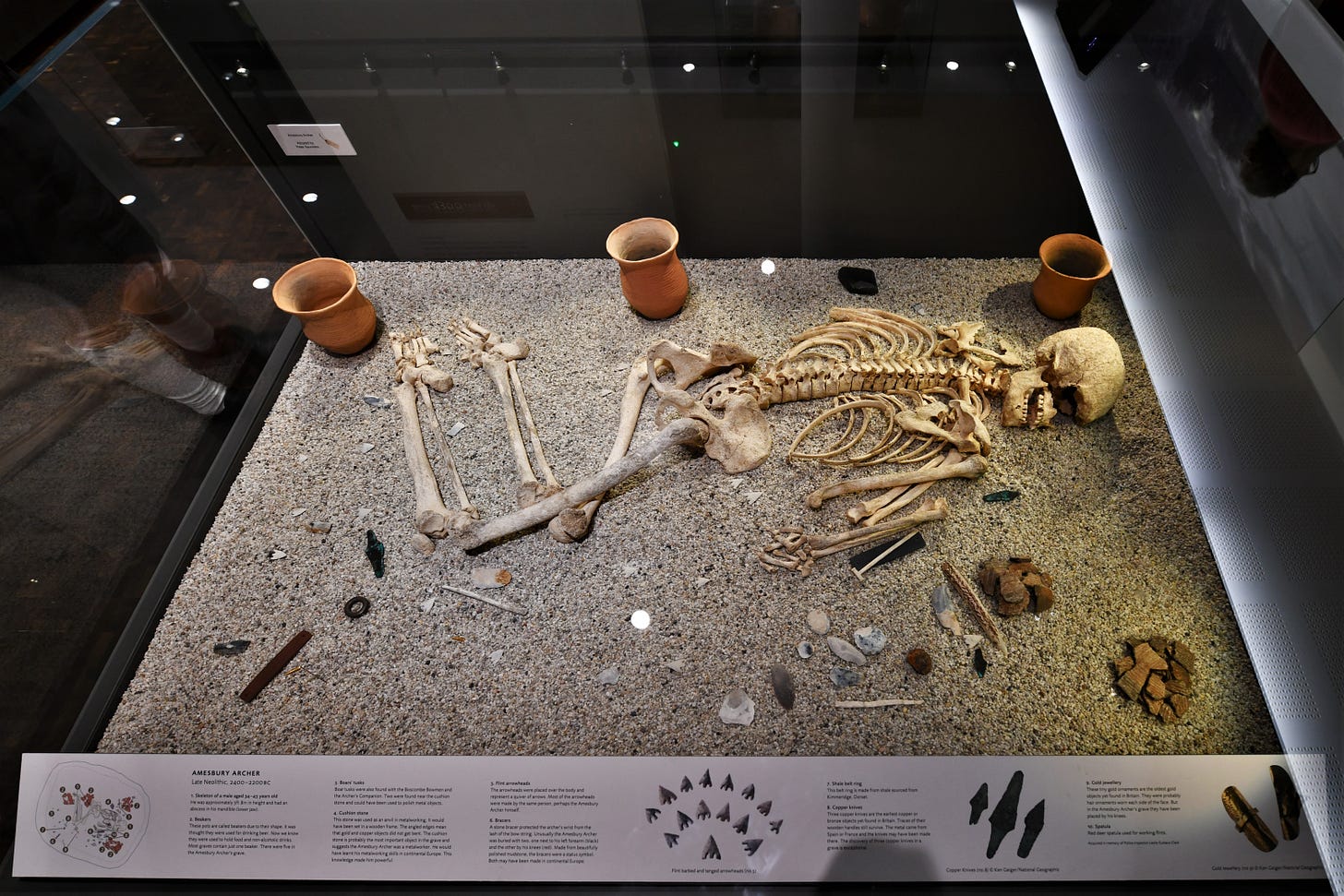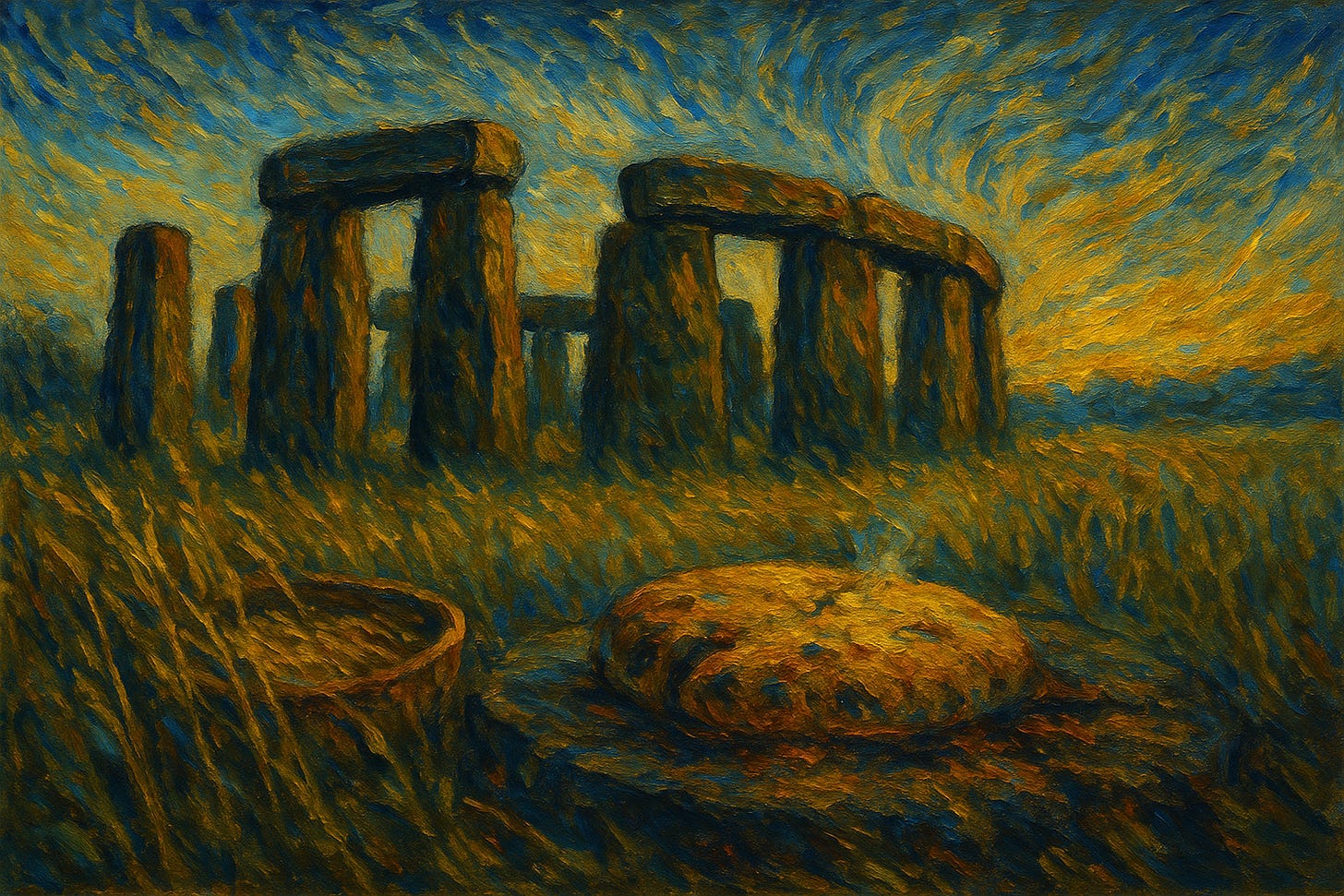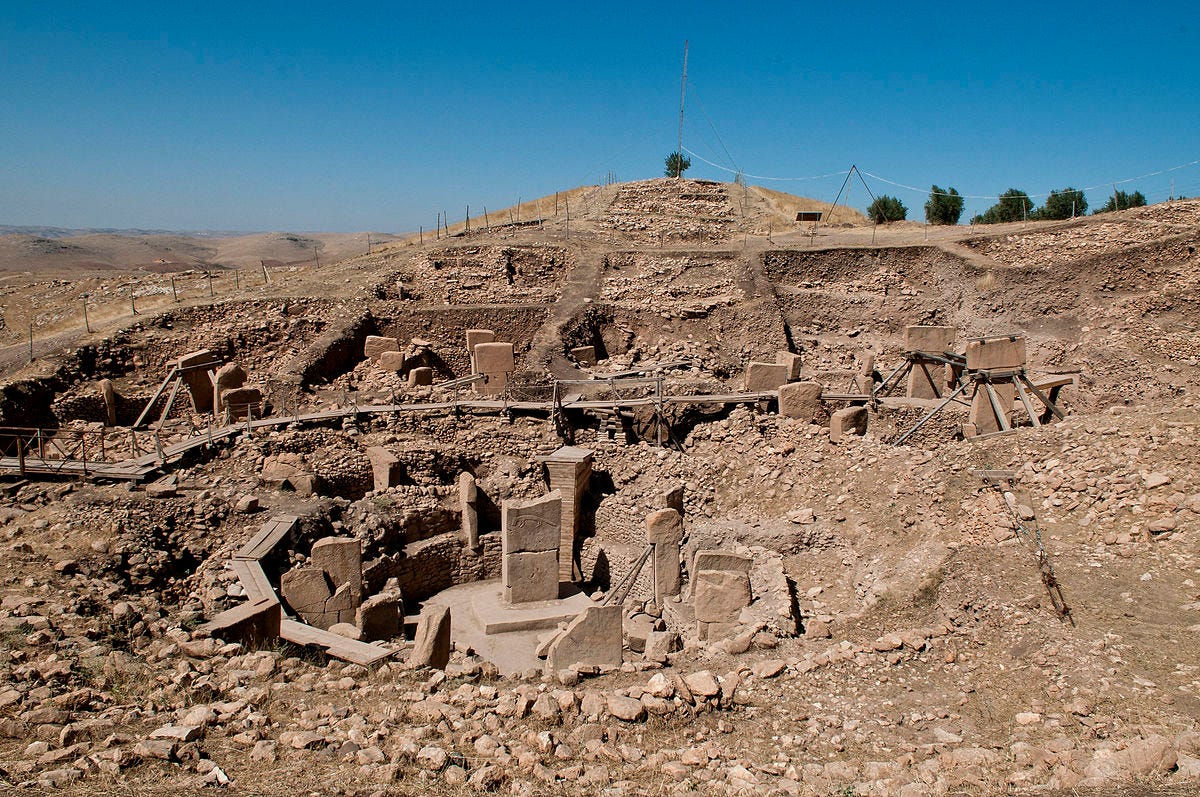🌞 When the Fields Fought Back Part I: Bread and the Gods
The invention of stability and the birth of anxiety
10 000 BCE → 3000 BCE
🔸 The Promise:
Plant seeds, wait, reap plenty. Predictability replaces the hunt’s chaos.
🔸 The Price:
Plagues, hierarchy, warfare—and a deep cultural fear of losing control.
1️⃣ The Great Stay-Put
Hunter-gatherers measured time by migration; farmers measured it by debt.
Once you’re rooted, you owe the soil. Granaries became the first banks; weather the first central planner. With every harvest cycle came the whisper: what if the rains don’t come? That’s how the first gods appeared—anxiety given personality.
2️⃣ The Calendar as Scripture
Early temples or places of ritual were observatories: Newgrange, Nabta Playa, Göbekli Tepe, each one an agricultural calendar and guide carved in stone.
The solstice wasn’t about mystery; it was about sowing on time. The beam of light through the chamber was a divine “check mark” that the priests still knew the schedule.
Every religion since carries the DNA of that scheduling logic: obedience to cosmic order so the crops, and society, don’t fail.
3️⃣ The Invention of “Tradition”
Farming communities built continuity cults: ancestor worship, seasonal festivals, taboos against novelty. Tradition wasn’t nostalgia; it was risk management.
Innovation could mean famine. So “newness” itself became suspect—a moral danger.
And yet… the surplus grew, populations swelled, and people pushed beyond the known. Trade routes and metallurgy crept in through the cracks of piety.
It is now believed that the final monumental phase of Stonehenge was the last hurrah of the late neolithic world, being replaced by the Beaker People and their metal working. Was it a goodbye or more likely a plea for help with dealing with the incoming change? The Amesbury Archer buried at Stonehenge came from the Alps and carried with him metal objects and more importantly change.
The more tightly the elders guarded the order, the faster difference slipped in.
Sound familiar?

4️⃣ The First Restoration
By the Bronze Age, every collapse had the same sermon:
“We angered the gods; return to the old ways.”
Every recovery had the same result:
More bureaucracy, more walls, more temples.
The pattern was locked. Each “return to order” built the scaffolding for the next revolution.
🌀 The Takeaway
Agriculture solved hunger by inventing control, and control invented fear.
From that moment on, every human system—empires, churches, ideologies, even algorithms—would chase the same impossible dream: a harvest without fear and uncertainty.
The Mesolithic forager fades into history and myth, but the logic of the plough lives in every data center and central bank. We are still the people of the fields, terrified that the weather will change, even when we think we can control the climate.
Next up 👉 Part II: Empires of Order — how the first priest-kings turned seasonal anxiety into permanent hierarchy, and why the cure for chaos kept breeding bigger empires.
Keep reading with a 7-day free trial
Subscribe to The Angry Dogs to keep reading this post and get 7 days of free access to the full post archives.




